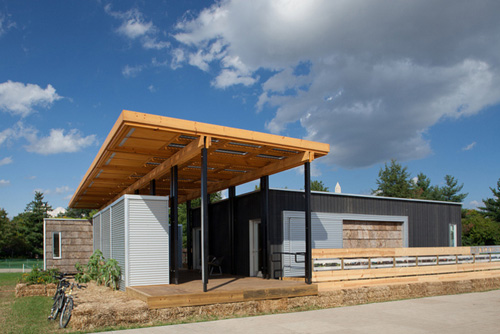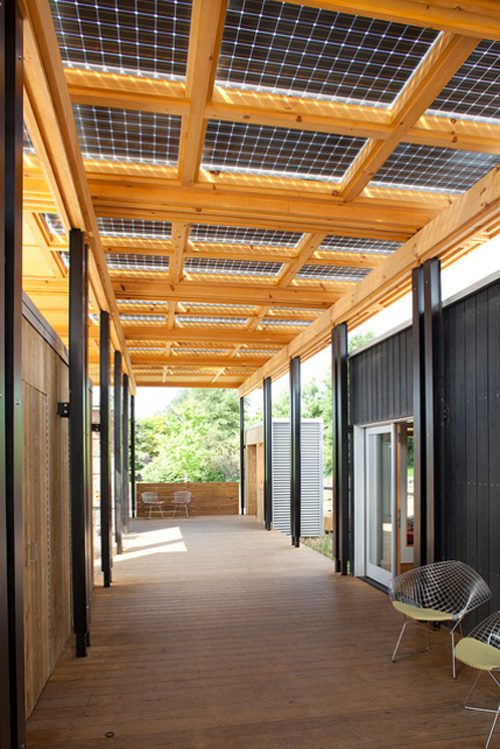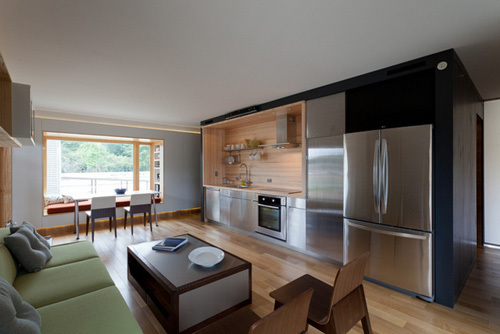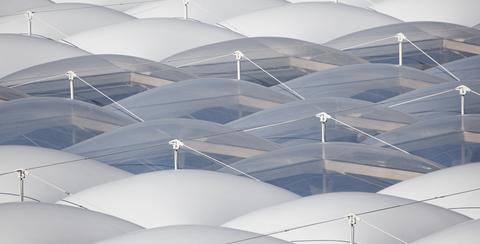Solar Decathlon 2011
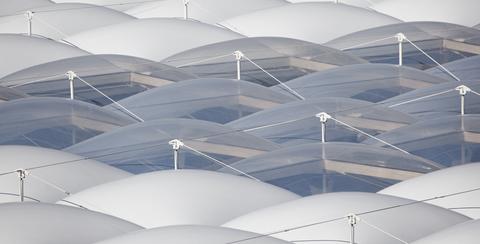
The Solar Decathlon 2011 ended last week: The University of Maryland won the individual architecture contest and the Appalachian State University the People’s Choice award.
The U.S. Department of Energy’s Solar Decathlon competition is held every two years since 2002: Teams of students are compete over 10 days with the design of cost-effective, energy-efficient and solar-powered homes at the U.S. National Mall in Washington, DC.
This year 20 teams from five countries presented their designs, which ranged from an Appalachian State's Solar Homestead influenced by vernacular typologies, to the University of Maryland's WaterShed house, whose micro-wetland helps reduce water pollution.
The University of Maryland won the individual architecture contest with its WaterShed house: A nearly 900-square-foot house made of two rectangular sheds that form a split butterfly roofline to maximize solar-energy generation and rainwater collectoion along a central axis.
The two sheds are connected by a third, smaller module that houses the bathroom.
Conceptually the building is inspired by the Chesapeake Bay ecosystem: Rainwater collected from the roof mixes with the house’s graywater from the shower, washing machine, and dishwasher, in constructed wetlands located under the bathroom and along the deck.
This year's Solar Declathon People's Choice award was won by the Appalachian State University of Boone, North Carolina, with its Solar Homestead, which consists of one main building and three out-buildings that can be configured in various ways.
The buildings elements including a Trombe wall, bifacial solar panels, and a staggered stud construction, are nearly all made of materials available at Lowes stores - the school's sponsor. Thus the materials are cost-effective and accessible to builders all across the United States, which guarantees a high reproducibility of the building
Along the large breezeway bifacial solar panels have been installed that collect direct sunlight from above and reflected light from below to increase the amount of energy created. Thereby the flatness of the roof, which is not the optimal angle for typical solar panels, is compensated for.
More information on the Solar Declathon 2011:
www.solardecathlon.gov




